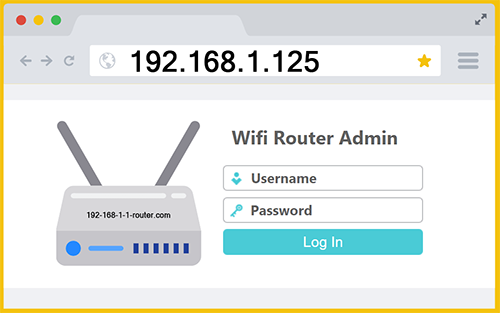192.168.1.125
 Guide to 192.168.1.125 Admin Login
Guide to 192.168.1.125 Admin Login
If you’re setting up a smart home gadget or router within your private network, you’ll need to connect directly to its internal IP address, often something like 192.168.1.125. Begin by ensuring your phone or computer is on the same wireless network as the device you’re trying to access. Then, launch a web browser such as Chrome or Safari and carefully enter “192.168.1.125” into the browser’s address bar at the very top.
Assuming the device is powered on and properly assigned that address, you should see a login prompt appear. At this stage, input the administrator credentials associated with the device. Once logged in, you’ll be able to explore the full range of settings, customize network preferences, enhance security, and fine tune the system’s behavior to match your specific requirements.
192.168.1.125 Control Panel

To begin the configuration process, ensure your phone is connected to the exact same WiFi network as the device you want to manage. Once connected, launch your preferred web browser such as Chrome and type 192.168.1.125 directly into the browser’s address bar located at the top of the window. Avoid using the search box, as that will not take you to the device.
If the IP is assigned correctly and the device is powered on, a login page should appear prompting you for credentials. Want to save time? Tap the blue button below to jump straight to the access page without manually entering the address.
Common username: admin
Common passwords: admin & password
Trying to open your device settings? Do not search for 192.168.1.125 on Google or ask an AI assistant. Those tools can explain what the address is, but they cannot connect you to your device. Searching will just show you articles or support pages, not the actual control panel.
To access the device itself, you must type the IP address directly into the address bar at the very top of your web browser. This creates a direct line between your device and your browser, allowing you to access its configuration dashboard and make adjustments to settings, security, and performance.
Using 192.168.1.125 for Device Access
The IP address 192.168.1.125 is part of a private network range commonly used in homes, offices, and businesses. Unlike public IP addresses that identify your location on the Internet, private IP addresses like 192.168.1.125 operate entirely within your local network. Devices such as routers, printers, security cameras, and smart home gadgets often receive these addresses automatically, letting each one communicate smoothly without interference or conflict.
When you enter 192.168.1.125 directly into your browser’s address bar, you open a private gateway to your device’s settings. Instead of sending you to an Internet website, the browser connects locally, showing a login page where you can manage your device. Whether you’re adjusting security configurations, updating firmware, or troubleshooting performance issues, knowing how to use this private IP address gives you control over your technology.
One significant advantage of IP addresses like 192.168.1.125 is that they’re isolated from external networks. This isolation enhances security by reducing the risk of unauthorized remote access. To access the configuration menu at this IP address, your device must be connected to the same local Wi-Fi or wired network. This built in safeguard ensures only trusted users within your immediate environment can make essential changes, further protecting your personal data and privacy.
Finally, if you’re unable to access a device at 192.168.1.125, it might be due to a connection issue, IP conflict, or incorrect settings on your router. Restarting the device or checking your router’s DHCP settings, which assign local IP addresses, usually resolves this. Learning about 192.168.1.125 and similar addresses empowers you with the skills to maintain your devices effectively, ensuring your home or office network runs smoothly.
192.168.125
The IP address 192.168.125 is not valid because it is incomplete and does not contain enough segments. A standard IPv4 address must include exactly four numeric segments separated by dots, such as 192.168.1.125. Each segment, known as an octet, ranges from 0 to 255 and is essential for accurately routing data to the right device within a network. Because 192.168.125 only has three segments, any device or browser will immediately recognize it as incomplete and unusable.
To properly connect to your intended device, you need to correct this incomplete IP by adding the missing segment. Usually, a private IP address like 192.168.125 should be written as 192.168.1.125, ensuring it contains all four octets. With this corrected IP address entered into your browser’s address bar, you’ll be able to successfully access your device’s settings and configuration panel without issue.